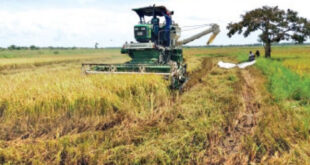Indians took the tea the British were marketing to them, added spices, milk and sugar, and transformed it forever.
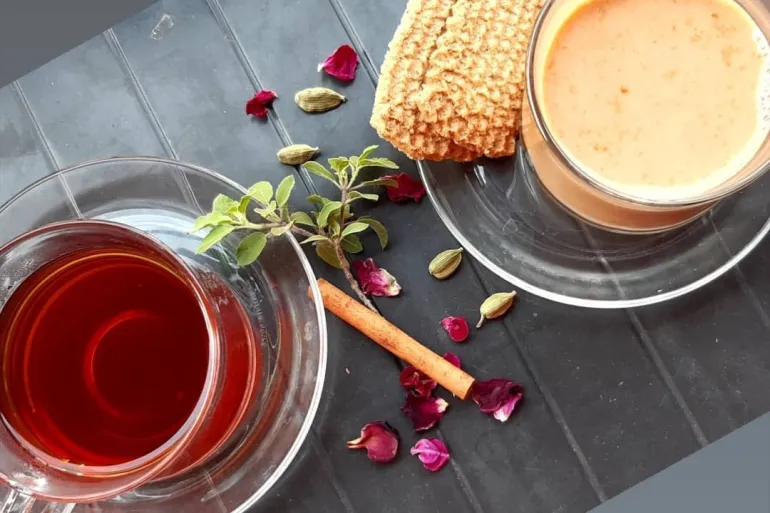
I remember jumping up to sit on the kitchen counter one afternoon. My five-year-old self wants to watch my mother making chai. She pushes me away from the gas stove but I am indignant and refuse to hop down, although I do move away a bit.
The water bubbles. She adds sugar, then takes a flat steel grater, balances it on the edge of the pot and grates in adrak (ginger).
“Why do we add this?” I ask, watching the shreds fall into the bubbling water.
“Child, I have to hurry I don’t have time for your questions,” she says. I sulk but I know that, being a doctor, she has to get to the hospital on time. I will ask grandma, I tell myself.
The ginger threads dance in the water. Then she adds the tea leaves, turning the contents of the pot brown. Stirring, she adds milk and lets it simmer over a low flame, still stirring. After a few minutes, she removes it from the heat and covers it. I hop down to watch the next step. She strains it in cups, puts them on a tray, and carries it to the dining table.
I run out. I have no interest in tasting it but am proud, boasting to my friends: “I know how to make chai.” By the end of the day, I have memorised the process forever.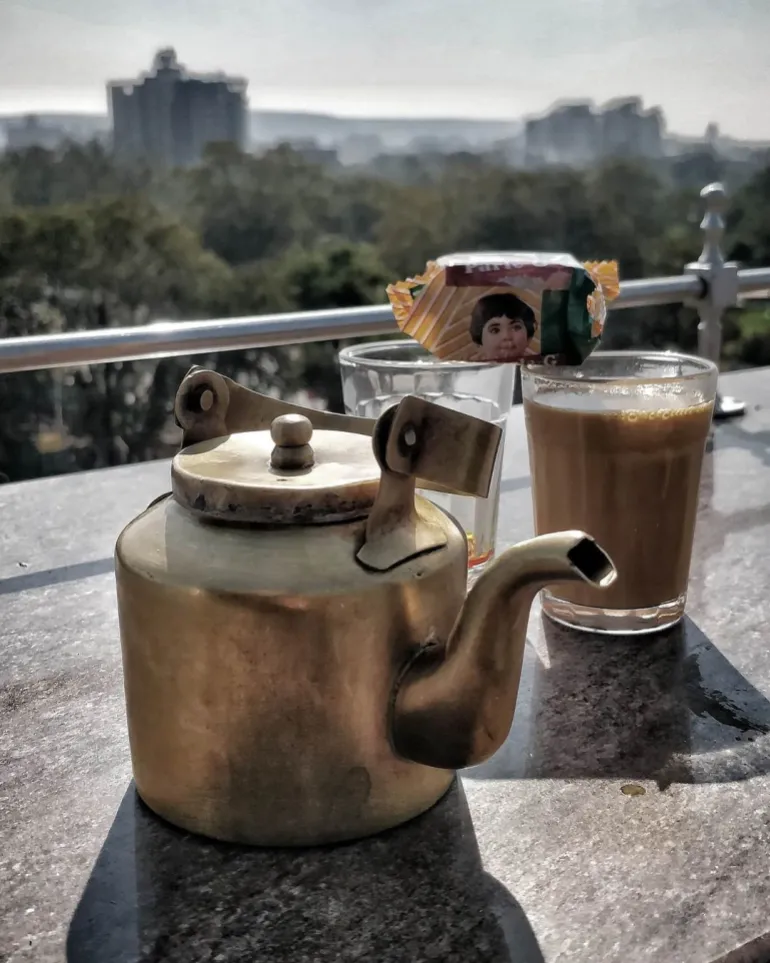
I don’t want to ask to taste it because I know if I do, she will dilute it with more milk. “Children should not drink tea,” she would say. I hated that pale milky liquid.
The first time I tasted real chai, I was in grade three. I had scored good marks on a maths test and ran home that August afternoon to share the news with my mother and grandparents as they were having their chai. Basking in the appreciation and pats on my back, I asked if I could have chai. Mother refused, but grandfather smiled and poured some into a cup. I took it and breathed the aroma in deeply. I took one sip, then the second. The creamy, rich beverage warmed my heart and spirit and at that precise moment, I became a chai lover.
I yearned to make chai but wasn’t allowed. “What if you spill the boiling water and get burned,” my grandmother would fret. Finally, when I was in grade five, she reluctantly allowed me to make it under her supervision and soon I was making it alone.
I felt so accomplished, measuring water, grating ginger, and scooping sugar and tea leaves to add to the boiling water. Watching the tea leaves spinning with the ginger. Then adding the milk and watching it lighten the chai and simmer, steeping the flavours. “A good cup of chai needs a slow fire,” I was told, something I follow to this day.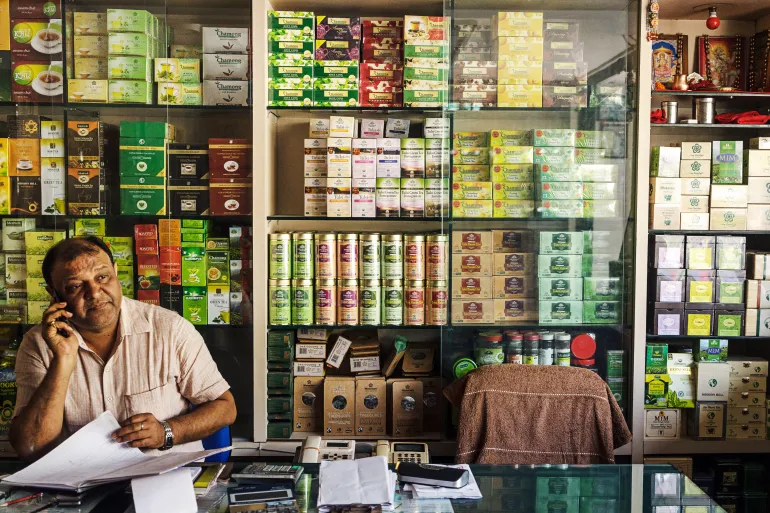
Fast forward a few years, and I am on my way home on a bitterly cold January evening in Indore. The sun is on leave and the wind drills into my bones. I enter a silent, cold apartment – my mother isn’t back from the hospital yet and my grandmother has moved to live with my uncle since my grandfather passed away.
I need chai. Soon, I’m sitting with a hot, steaming cup, sipping it slowly. I close my eyes, savouring the sweet milk, sharp ginger and cinnamon. By then, I was experimenting with spices and adding what felt right at the moment – cinnamon, fennel, green cardamom and more. I would add lemongrass, holy basil and peppercorns if I had a cold or sore throat.
Chai is tea, tea is chai
Chai in India is a drink for no reason and for every reason, morning, afternoon, evening and night. It lifts your spirits while studying for the maths paper or learning chemistry formulas. It spices college gossip and fans rumours. A welcoming or parting drink, to convince friends and family to stay longer to share more stories.
It brings everyone together. It is served in homes, board meetings, college canteens, cafes and at weddings. “Chalo chai ho jaye,” (Let’s have tea) is heard every day.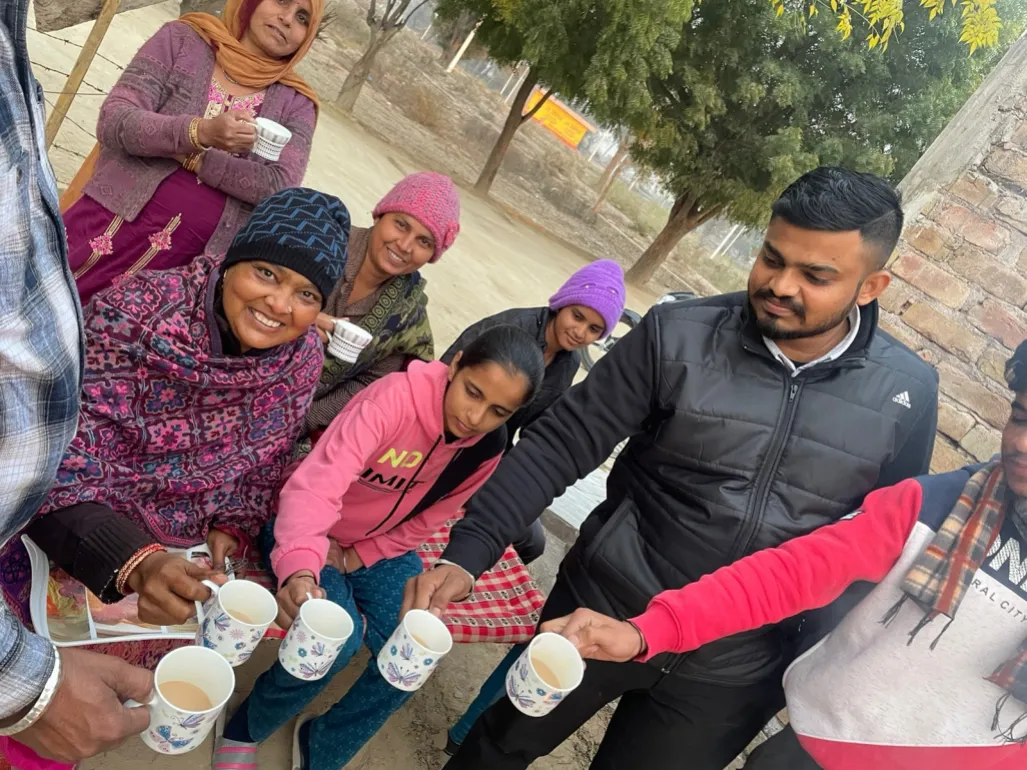
Tea is chai in India. When, where, and how the first cup of chai was brewed is still up for debate, but the stories from our elders give us an idea about the evolution of this delicious, addictive beverage.
Prerna Kumar, founder of ChaiVeda and purveyor of medicinal blends, says: “The early reference to tea is found in the Buddhist texts where the monks drank some kind of tea while fasting and meditating.
“They made tea from foraged tea leaves and perhaps added certain flowers to the decoction to help them feel calmer.”
But how did tea become chai and give birth to chaiwallahs (chai sellers) and chai drinkers?
I remember sitting with my grandfather and a history book in grade 10. He could make history dance in front of your eyes but I wasn’t enthusiastic about that day’s lesson. It wasn’t about kings or queens or battles, but the dull history of the everyday drink. How interesting could it be?
Grandfather pushes the book away and tells me to just listen.
“Tea,” he began, “comes from China.”
With that, he launched a history lesson replete with scenes of Britishers drinking tea, tea traders at seaports and expansive green tea plantations in Assam.
The English were introduced to tea when the Dutch East India Company began to import it into Europe in the 17th century, and its popularity gradually grew. By the 18th century, the English East India Company was importing enough tea from China that it was considered one of the company’s main assets. But there was worry over China refusing to renew the English trade monopoly and a search for alternatives began.
English botanist Sir Joseph Banks suggested that the English in Assam grow tea there in 1778 after it was discovered that the Singpho tribe in Assam and Arunachal Pradesh drank a wild tea plant. But there was little interest until China broke the monopoly in 1833; two years later, tea growing in Assam began, food historian Mohsina Mukadam from Mumbai elaborates.
The Assam Tea Company was formed in 1839 and started marketing in Europe. Tea wasn’t a widely known beverage in India and it wasn’t until the start of the Great Depression in 1929 that the company looked at the Indian market to move its perishable stock, Mukadam added.
They started mandatory tea breaks in factories; tea-making demonstrations in markets and in homes where women could watch from the purdah (a screened enclosure); film screenings in villages to dole out free tea samples. Free tea on the purchase of saris. Tea sold at railway stations. But tea still wasn’t becoming as popular as hoped.
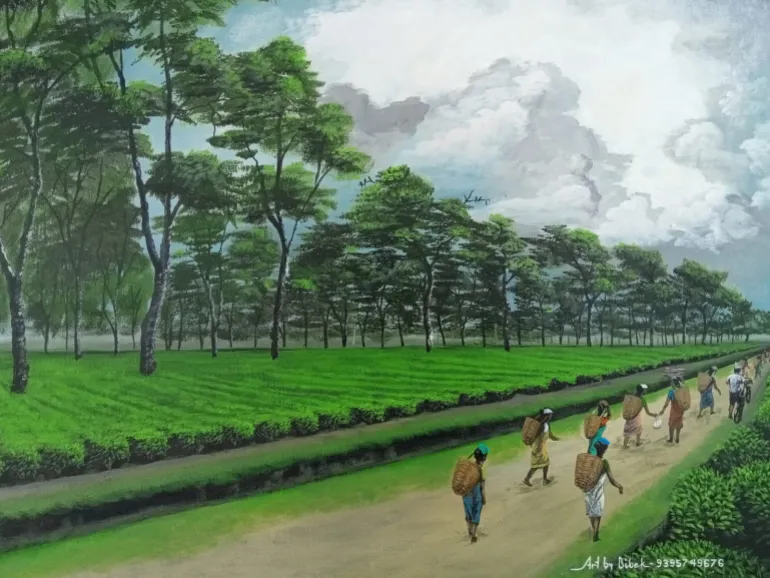
“The British were overconfident about changing our food habits,” grandfather smiled. Indians were wary of this new beverage. “We took it, added spices, milk, and sugar, transforming tea-making forever.”
Now I’m completely fascinated with the tea lesson.
Author and chef Sadaf Hussain, a lover of food history and stories, tells me later: “Britishers gave us the habit of tea but … we Indianised the recipe to suit our taste.
“We were used to drinking ‘kadha’ [herbal decoctions] for ages and we innovated tea into something similar by using spices, milk, and sugar. The addition of milk was … to increase the quantity as tea leaves were expensive and, India being an agricultural country, milk was easily available.”
Today, India is the largest consumer of tea in the world, the second-largest producer and the fourth-largest exporter. According to Tea Board India, the country produced 1.34 million tonnes of tea in 2021, about 80 percent of it for domestic consumption.
Masala chai
Basic masala chai is tea boiled in a mixture of milk, water, sugar, and any or all spices, like cardamom, cinnamon, clove, ginger or black pepper.
Every family has a special chai recipe. “Some like a mild version, others enjoy it strong,” chai-making is personal, Sadaf says. Some like ginger or cardamom, or both or neither, he explains.
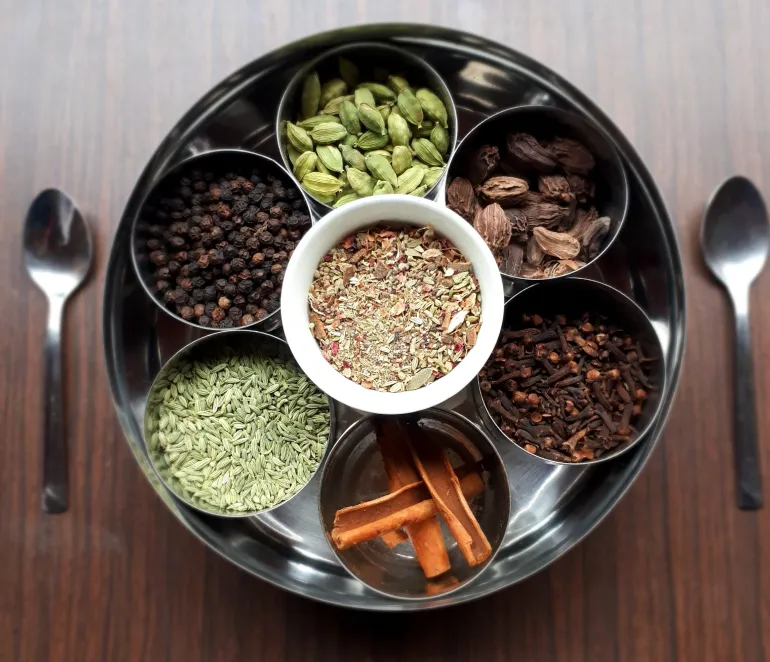
“There are around 20,000 ingredients that have been added to tea around the world,” shares Prerna. “It is mind-boggling … Anything that can be added to food can be added to tea.”
Masala chai can include herbs, spices and flowers – black pepper, cardamom, cinnamon, cloves, fennel, ginger, holy basil, liquorice, nutmeg, rose petals and more. The best chai is inspired by the masala dabba (box of spices), a quintessential presence in Indian kitchens. Ginger and black pepper are good for digestion and warming. Cloves, with their antiseptic properties, are good for sore throats and cardamom can elevate your mood.
I will never forget my Mumbai neighbour Sumathy Aunty’s masala chai. A new bride, I had reached Mumbai early that morning and was taking my stuff upstairs when the apartment next door opened and a lady draped in a sari dashed out, smiling over her shoulder in the way people in Mumbai do when they need to get somewhere. I was new to Mumbai and wasn’t aware of what a feat it was to catch the trains crisscrossing the city. Every second counted and could delay you. That evening around seven, Sumathy Aunty knocked and asked me over for tea. What blossomed thereafter was a unique friendship between me, recently married and in my early twenties, and Sumathy Aunty, who was in her late fifties.
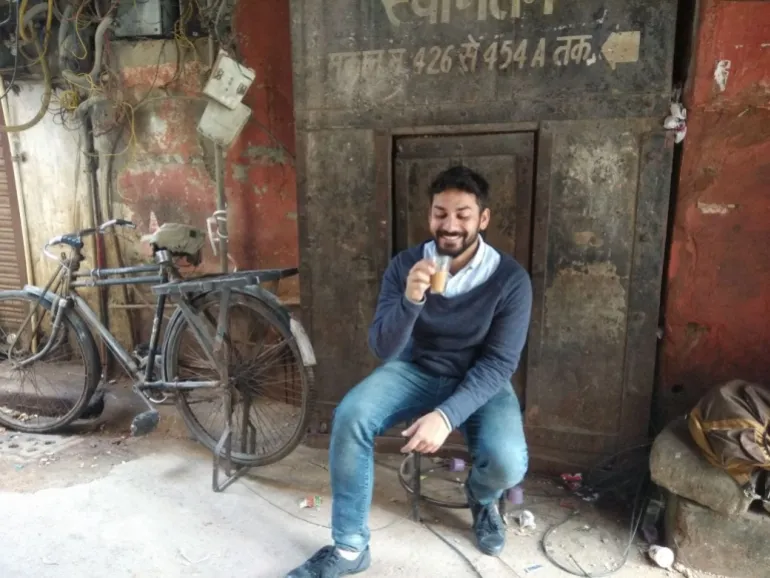
We would sip chai with farsan or chivda (fried lentil and flat rice spiced snacks) and sometimes, on rainy days, I would make mangodis (spiced lentil fritters), a speciality of central India, where I’m from. We exchanged recipes and cooking tips from our home states and she shared life skills to survive in Mumbai, a city that, for a small-town girl like me, was quite stressful.
Her chai was a caramel brew that always made me crave more. It had ginger, fennel seeds, cardamom and lemongrass, but there was more to it. When asked how she got it to taste this way, she attributed it to a mantra she chanted.
No two chais are the same, even the process and the mindset of the person making chai play a huge role, according to Prerna. “My husband is able to discern a difference if I am unhappy with him for some reason while making tea,” she laughs.
Making chai
Here’s an easy, basic chai recipe.Bring a cup and a half of water to a boil in a stainless steel pot, then turn the heat down so the water just simmers. Add in about an inch of ginger, grated, and a teaspoon of chopped lemongrass, a pinch of cinnamon and two teaspoons of sugar. If you have any other spices you want to put in the water as it boils, go ahead, variety is definitely welcome, as the chai map of India shows.
Let the mixture simmer away for a few minutes then drop in two teaspoons of black tea leaves.
Once the water darkens, add a cup of whole milk slowly, stirring the whole time until it starts bubbling again. To aerate your chai, take ladlefuls of the mixture and, lifting your hand about a foot above the pot, pour it back in. After a few minutes of aerating, turn off the heat and cover the pot to let the chai rest a bit. Then strain it into teacups and enjoy.
‘If you’re Indian, you must like tea’
South India has been a coffee stronghold for many years but things are starting to change as the humble chai made its way into people’s hearts and chai shops serving a variety ranging from ginger to masala and lemon hold pride of place along with “Kumbakonam coffee” houses, writer Chandrika R Krishnan shares.
“Recently, a newly opened tea shop in the suburbs of Chennai sported a sign: ‘Tea is liquid wisdom,’” she says, “and why not, looking at the steady footfall it experienced,” she adds.
Moving north, “In Old Delhi, Bhopal [central India] and Lucknow [northern India], no one asks if you will have tea, but just offer it. If you are an Indian, you must like tea and cricket,” laughs Sadaf.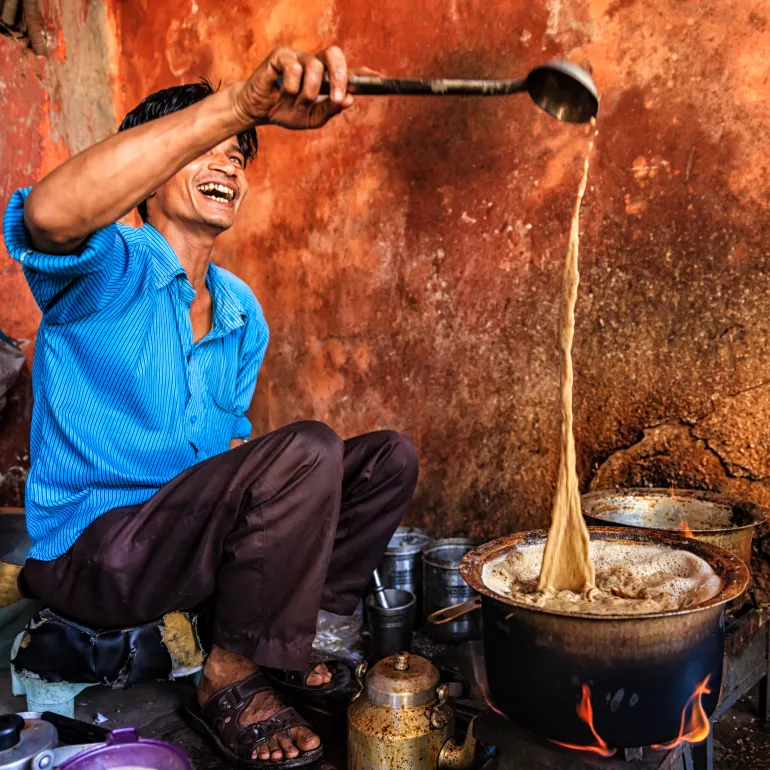
Sadaf conducts food walks in Delhi that start from a tea shop near the Jama Masjid in Old Delhi that serves a unique chai. Here the milk is boiled separately from the tea and water, simmered until it thickens and sweetens to a point where sugar becomes optional.
To serve, the tea is poured first into a kullad (a special clay cup for tea) and then topped with thickened milk. Now, connoisseurs will tell you that chai in a kullad is something to live for, that tea and cup meet as long-lost friends. The kullad absorbs the tea and the taste of the clay mingles with the hot chai, imparting an earthy, smoky flavour.
In Bhopal, a famous golden chai is served, made with only milk. Here too, full-fat milk is boiled until it reduces to less than half, then cardamom and tea leaves are added to it. No sugar is added to this chai as the creamy milk releases its natural sugars, adding layers of flavour.In Lucknow, there’s a famous chai shop called Sharmaji Chai Wale that always has long queues in front of it and is known to keep going till the wee hours, so you can always get a chai and bun maska pao (buttered buns). “It has become a norm now, many shops in Lucknow are selling bun chai, a good, quick meal,” Sadaf says.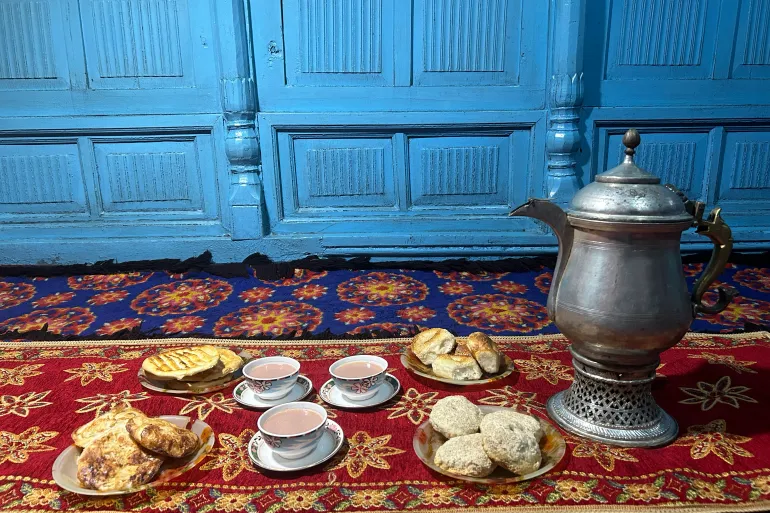
Lucknow has also embraced noon (salt) chai, a beloved chai from Kashmir made with green tea leaves, salt and baking soda, which turns the drink pink, especially when milk is added. Brought to the city with Kashmiris who moved there, noon chai initially had a rough time because Lucknowites didn’t like its salty flavour. But soon new Lucknow-Kashmiri chai recipes developed that omitted the salt and kept the baking soda, dubbed gulabi (pink) chai.
Regular gulabi chai is kept hot in a samovar (a traditional copper double-decker teapot used to brew, boil and serve noon chai) and served in a kullad.
Then there’s the biscuit option. In this overly-sweet version, a puff pastry biscuit is placed at the bottom of the cup and hot tea is poured over it, making the biscuit mushy. You get a spoon to stir the mushy biscuit around and eat it like breakfast cereal.
Gujarat in the west is pretty famous for its chai as well, according to Prerna who describes an extra-milky, extra-sweet chai – but not pink – made with dried ginger and cinnamon that pairs perfectly with spicy fried snacks.
Even northwesterly Punjab – a state famous for milk and lassi (a churned yoghurt drink) – has a 24-hour tea shop at The Golden Temple in Amritsar.
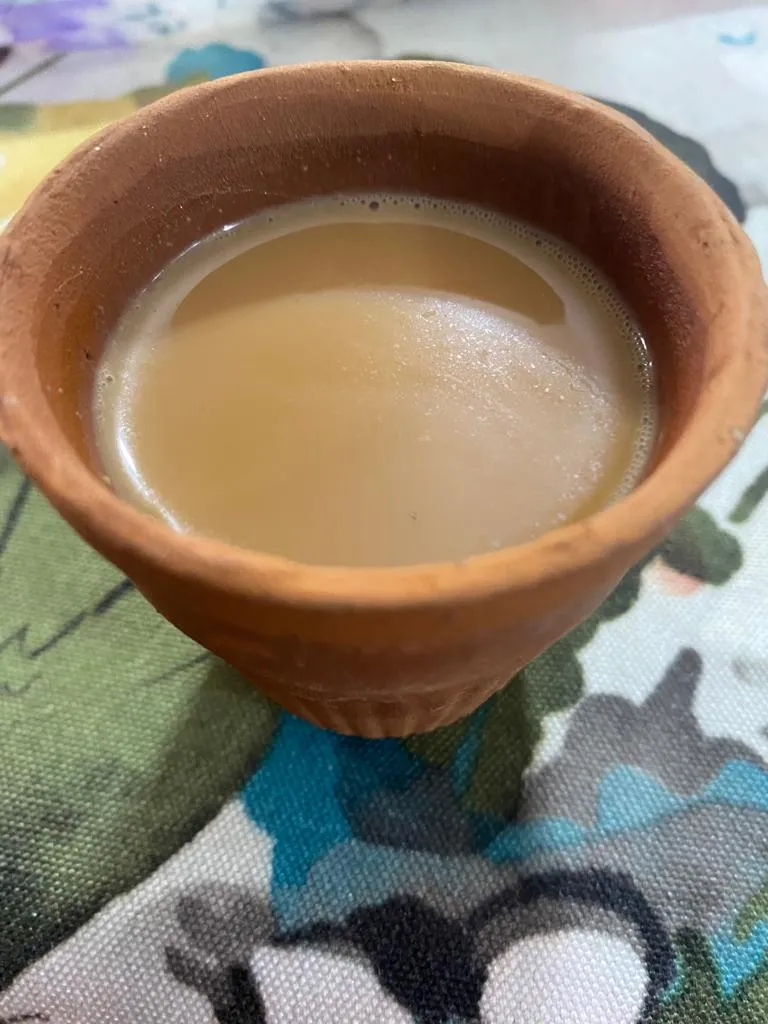
In Bihar in the northeast, chai is served in a small conical cup that can only hold two mouthfuls called a kapti, which Sadaf says comes from two words – cup and tea.
Chai on the road and rails
Why is the chai sold in tapri (roadside chai stalls) more delicious than the chai prepared at home? Possibly because of the experience that accompanies it.
There’s “500-meel (500-mile) chai”, a roadside favourite I encountered a few years back on my way from Meerut to New Delhi with a group of college classmates. We stopped at a roadside dhaba for dinner that late December night, the cold wind cutting through to our bones, so we sat savouring chai while waiting for our food. A truck stopped and two drivers jumped out and ordered a 500-meel chai. Intrigued, I asked the dhaba owner what that was.He told me it is a strong, sweet brew that helps late-night truck drivers go “for another 500 miles”, so we decide to try it. It is indeed sweet and strong, with its blend of spices, and it kept us wide awake for the rest of the journey.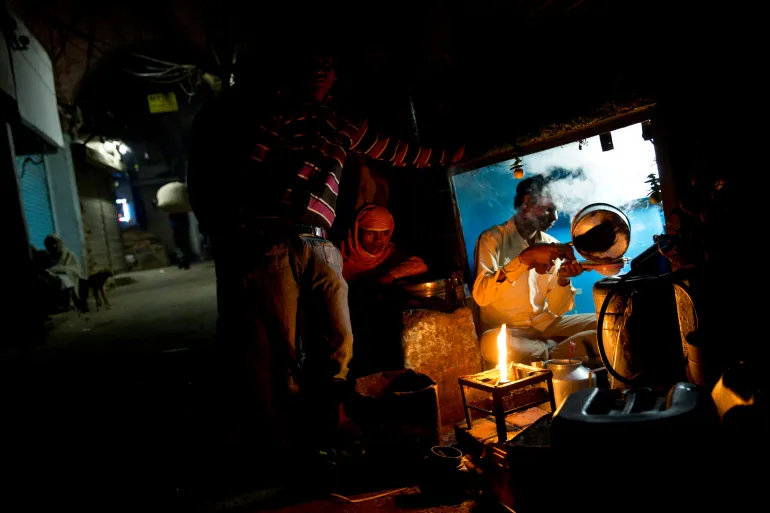
There’s also the memory of relishing hot creamy chai one January afternoon while shopping in a Delhi flea market. It had been a busy day visiting historical monuments as a part of our college education as history students.
Tired, cold and hungry we gathered near the chai stall and waited longingly for the hot brew. The vendor stirred the chai, laden with sugar, tea leaves and spices as it bubbled and foamed. Then, holding his hand up high, he dexterously poured it into kullad.
Someone bought ram laddus from another stall – mung lentil fritters served with grated radish, green chillies and chutney, a popular Delhi street food. I took a bite. The crunchy exterior gave way to the soft mung bean heart as chillies and garlic tantalised my taste buds. I ate, craved and ate again. In between, I sipped tea and my fatigue disappeared in the dull, cold afternoon.
Prerna says there are two other reasons for the superiority of roadside chai, “the high heat on which the chai is made and constant stirring of chai with a ladle, a scientific process called heat-aerating”.
The constant stirring adds air to the mix, encouraging the spices and tea to mix and frothing the milk as the chaiwallah lifts steaming ladlefuls of it and pours them back into the pot, she explains.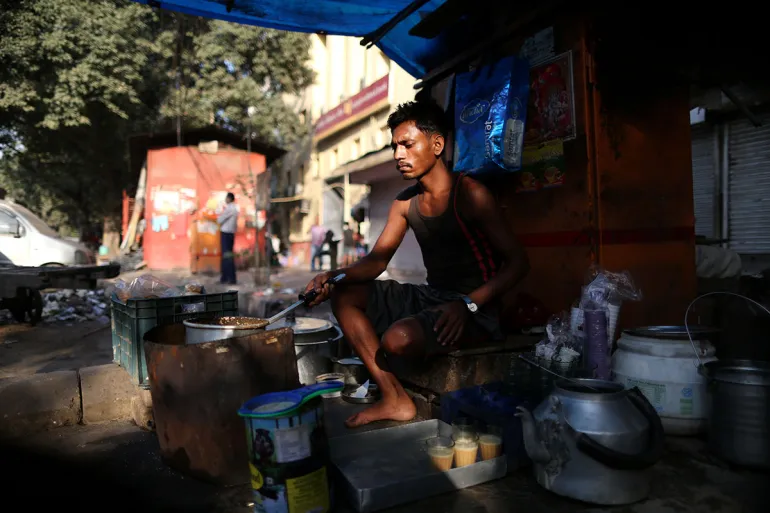
Chaiwallahs and train travel are inseparable. I can never forget my “dark night of the soul” years ago, a sad journey when I had to travel by train alone, lonely, lost and scared, fighting tears because I couldn’t cry in public. Then I heard the hawkers’ chant of “Chai garam!” as the train slowly chugged into a station.
It was past midnight, but I decided to get some chai in a traditional kullad. That night, that hot chai with ginger and a trace of cardamom, laced with thickened milk and sugar, consoled me. It became my friend forever, the light at the end of the proverbial tunnel. Today, chai is my comfort drink at any time, season and for any mood.
Chai as celebration, chai as medicine
Centuries ago, Indians had two meals a day: one in the morning or at midday, depending on the person’s occupation and requirements, and early dinner, shares Prerna. That changed with time, and when campaigns to introduce tea into the Indian market started, so did the push to make breakfast into a bigger meal with chai which, of course, was encouraged as an accompaniment to an afternoon snack.Chai can be enjoyed alone, but it excels in company. Small, sweet plain biscuits are a must with chai and have been a hot favourite for generations. Other options include cookies, toast and spicy fried snacks.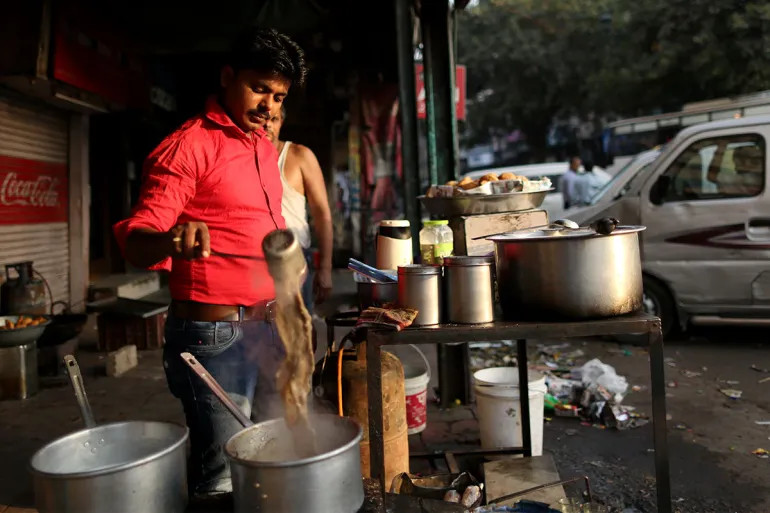
Hot chai with samosas and pakoras (vegetable fritters) are the nation’s way to welcome the rains. Digging into crispy snacks and drinking hot tea is a celebration of the senses. Nothing can compete with a samosa and chai combination to make Indians happy.
Food habits in India have also been strongly dictated by Ayurveda, the ancient science of life. It is so deeply ingrained in the culture that everyday recipes and even the assortment of vegetarian dishes – without onions and garlic – prepared for religious festivals and ceremonies are based on Ayurveda.
“Tea, according to Ayurveda, is more of a medicine”, Dr Rekha Radhamony, a fourth-generation Ayurvedic doctor from Kerala, tells me.
“Tea is best taken with mishri (unrefined rock sugar),” the ideal sweetener for tea with milk, she says.
If tea is sweetened with jaggery – also an unrefined sugar that contains more molasses than mishri – milk shouldn’t be added as combining jaggery and milk is contraindicated in Ayurveda, she explains. She recommends adding cardamom to all kinds of tea, which reduces the sharpness of tea and makes it digestible
You can have tea with breakfast but don’t have it on an empty stomach as it might interfere with digestion. The ideal tea time is before 4pm. Any later and it could disturb sleep, Rekha elaborates.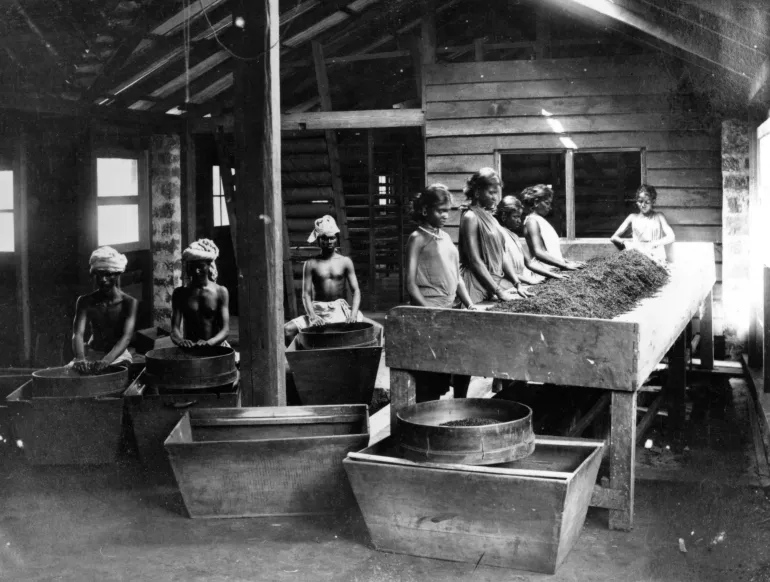
Every day is Chai Day
May 21 was declared International Tea Day in 2019 by the United Nations, but every day is Chai Day in India.
Chai is chai because of its stories and infinite recipes. It is a witness to conversations from the mundane to the life-changing. People bond over a cup of chai, even strangers in trains and food stalls on highways.
You hear interesting snippets about politics and parliament, news, great places to enjoy local food, flea markets for bargain buys and even suggestions for financial investments and tax planning.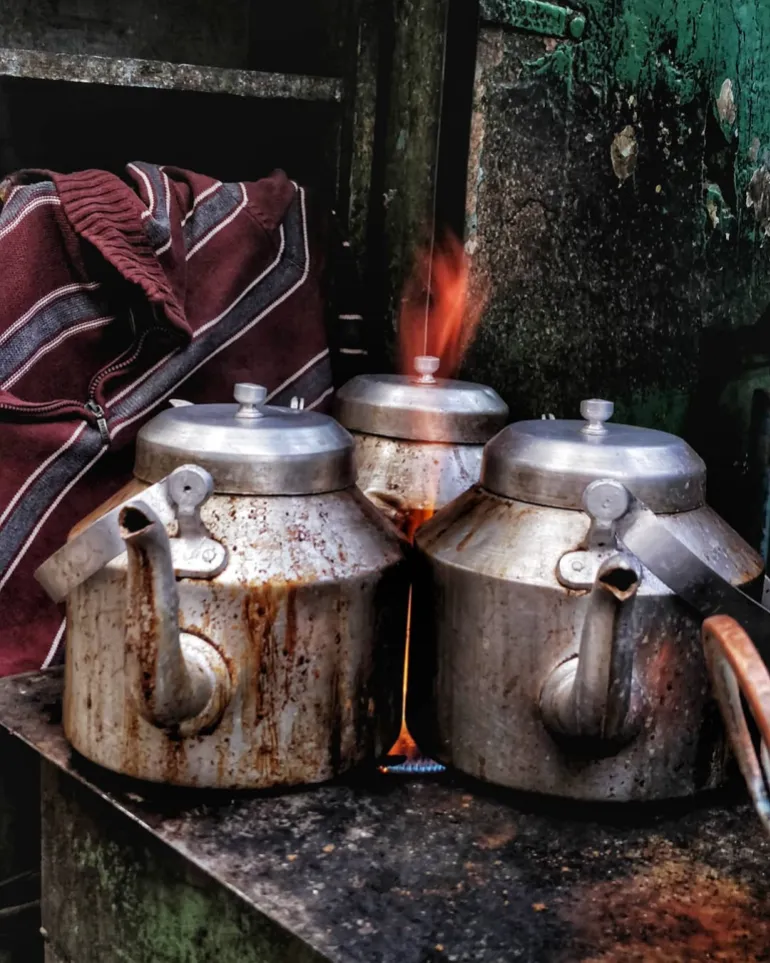
In a country where the food preparations change every “kos” (about three km), chai-making varies drastically between homes and even within families. Chai recipes with stories from neighbourhoods, villages, cities and towns are an inseparable part of the Indian identity.
It is heart-warming to hold a cup of hot chai on a rainy evening and let the steam envelop your face. The aromatic liquid is a glimmer of hope in trying times and adds joy to happier times.
Simply put, a cup of chai and a plate of samosas can lift your spirits.
Post Disclaimer | Support Us
Support Us
The sailanmuslim.com web site entirely supported by individual donors and well wishers. If you regularly visit this site and wish to show your appreciation, or if you wish to see further development of sailanmuslim.com, please donate us
IMPORTANT : All content hosted on sailanmuslim.com is solely for non-commercial purposes and with the permission of original copyright holders. Any other use of the hosted content, such as for financial gain, requires express approval from the copyright owners.
 Sri lanka Muslims Web Portal Sri Lanka Muslims News Center
Sri lanka Muslims Web Portal Sri Lanka Muslims News Center
 Donate
Donate
